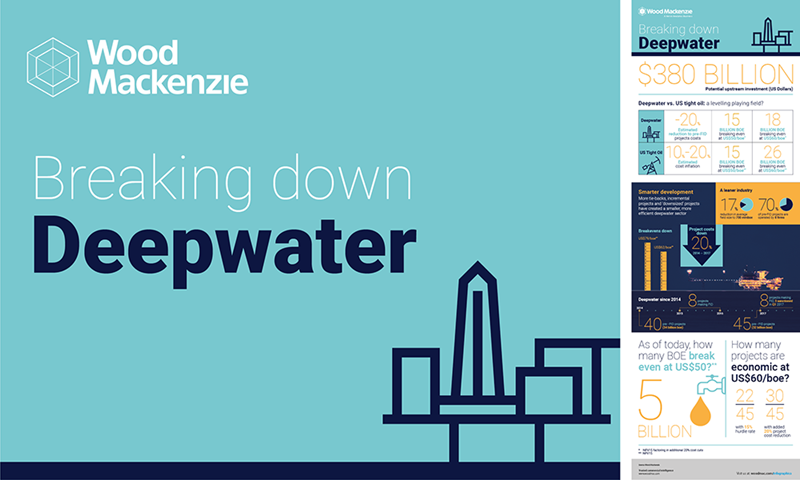Discuss your challenges with our solutions experts
Are deepwater economics on par with US tight oil?
Deepwater projects are getting smaller but cheaper to develop
1 minute read
Angus Rodger
Vice President, SME Upstream APAC & Middle East

Angus Rodger
Vice President, SME Upstream APAC & Middle East
Angus leads our benchmark analysis of global Pre-FID delays, and deep water developments.
Latest articles by Angus
-
The Edge
Why upstream companies might break their capital discipline rules
-
Featured
Upstream oil & gas regions 2025 outlook
-
Opinion
How to make upstream licensing work
-
The Edge
What’s driving the upstream revival in Southeast Asia?
-
Opinion
A two-decade decline in exploration is driving the need for carbon neutral investment in Australia’s upstream sector
-
Opinion
Asia Pacific upstream: 5 things to look for in 2024
With all the attention surrounding US tight oil breakevens and the Permian boom, the past few years seem to have left deepwater investment in the dust. But as it has gotten leaner, the deepwater industry is quietly recovering and improving its own economics.
While US tight oil faces a minimum of 10 to 20% rapid cost inflation as oil companies drill in earnest and service sector demand booms, deepwater projects continue to move down the cost curve.
Drivers include re-worked project designs, fewer and cheaper wells, smaller facilities, and portfolio high-grading. By focusing on smaller but smarter developments, deepwater project breakevens are over 20% lower than mid-2014, with 5 billion barrels of oil equivalent (boe) breaking even at US$50/boe and 15 billion at US$60/boe (NPV15).
After nearly three years of struggling to attract new investment, we are beginning to see evidence that the playing field is beginning to level for two of the most important upstream asset classes — tight oil and deepwater.
How did deepwater project economics become competitive with US tight oil?
Upstream Research Director Angus Rodger explains how we've arrived at these project economics.
We believe deepwater can provide viable competition with tight oil for investment within the portfolios of the industry's major players. 'Permania' broke out of the gate early, and has a strong lead, but deepwater is the dark horse.
Given we remain in a capital-constrained world and many players have exited the deepwater sector to focus on the onshore US, the outlook for new FIDs remains challenging. But we believe more deepwater projects will achieve sub-US$50/boe breakevens, as evidenced already in the Gulf of Mexico. The first quarter of 2017 saw three projects sanctioned — two in the Gulf of Mexico, one offshore Israel — and all have breakevens below US$50/boe. We see around eight projects making FID in 2017 — a number which equals 2016 and 2015 combined.
The days of rock-bottom tight oil breakevens are probably behind us. The Gulf of Mexico is in a strong position in the near and long term because they have a level playing field for services, and it's ultra-competitive.

Angus Rodger
Vice President, SME Upstream APAC & Middle East
Angus leads our benchmark analysis of global Pre-FID delays, and deep water developments.
Latest articles by Angus
-
The Edge
Why upstream companies might break their capital discipline rules
-
Featured
Upstream oil & gas regions 2025 outlook
-
Opinion
How to make upstream licensing work
-
The Edge
What’s driving the upstream revival in Southeast Asia?
-
Opinion
A two-decade decline in exploration is driving the need for carbon neutral investment in Australia’s upstream sector
-
Opinion
Asia Pacific upstream: 5 things to look for in 2024
Deepwater will continue to be the primary source for world-class conventional discoveries — of our top 15 wildcat 'wells to watch' in 2017, almost all are in more than 400 metres of water. If the Majors want to grow, they need to sanction projects. So what's next? Only the most competitive deepwater projects will move forward, but those that thrive may give investors pause, even in an industry rapt by unconventional noise.
This analysis was prepared using our Global Economic Model (GEM), available upon subscription.
Read about deepwater economics in the news







